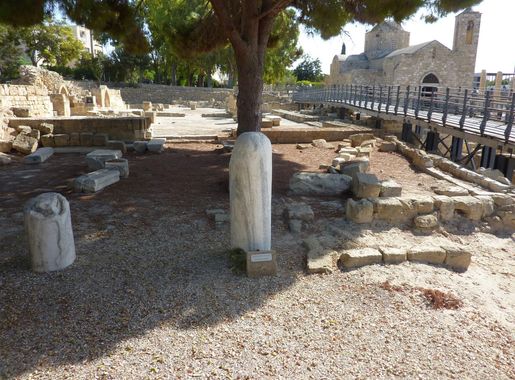
Discover the Historic Charm of Kato Paphos
Explore Kato Paphos: A blend of ancient history, vibrant coastal life, and picturesque landscapes in the heart of Paphos, Cyprus.
Kato Paphos is a captivating neighbourhood that beautifully blends ancient history with modern charm. Located in the picturesque city of Paphos, Cyprus, this area is a treasure trove of archaeological wonders, vibrant streets, and stunning coastal views. As you wander through the cobbled lanes, you'll find a plethora of historical sites, from the Paphos Archaeological Park, where ancient mosaics tell stories of the past, to the medieval Paphos Castle standing guard by the harbour. The bustling harbour is the heart of Kato Paphos, where traditional fishing boats bob alongside luxury yachts. The promenade is lined with an array of cafes, restaurants, and shops, offering a delightful mix of local and international cuisine. Whether you're indulging in fresh seafood or sipping a Cypriot coffee, the views of the Mediterranean Sea will make your dining experience unforgettable. For those interested in culture, Kato Paphos is home to the House of Dionysus and other ancient ruins that provide a glimpse into the region’s rich history. The nearby Tombs of the Kings, a UNESCO World Heritage site, offers another fascinating exploration of ancient burial sites set amidst lush landscapes. The neighbourhood's lively atmosphere, coupled with its historical significance, makes it a must-visit destination for any traveller to Cyprus.
Local tips in Kato Paphos
- Visit the Paphos Archaeological Park early in the morning to avoid crowds and the midday heat.
- Wear comfortable walking shoes as the cobblestone streets and archaeological sites can be uneven.
- Take time to enjoy a meal at the harbour; the sunset views are particularly spectacular.
- Consider a guided tour to fully appreciate the historical context of the ancient ruins and mosaics.
- Check local schedules for any cultural events or festivals happening during your visit.
Discover the Historic Charm of Kato Paphos
Kato Paphos is a captivating neighbourhood that beautifully blends ancient history with modern charm. Located in the picturesque city of Paphos, Cyprus, this area is a treasure trove of archaeological wonders, vibrant streets, and stunning coastal views. As you wander through the cobbled lanes, you'll find a plethora of historical sites, from the Paphos Archaeological Park, where ancient mosaics tell stories of the past, to the medieval Paphos Castle standing guard by the harbour. The bustling harbour is the heart of Kato Paphos, where traditional fishing boats bob alongside luxury yachts. The promenade is lined with an array of cafes, restaurants, and shops, offering a delightful mix of local and international cuisine. Whether you're indulging in fresh seafood or sipping a Cypriot coffee, the views of the Mediterranean Sea will make your dining experience unforgettable. For those interested in culture, Kato Paphos is home to the House of Dionysus and other ancient ruins that provide a glimpse into the region’s rich history. The nearby Tombs of the Kings, a UNESCO World Heritage site, offers another fascinating exploration of ancient burial sites set amidst lush landscapes. The neighbourhood's lively atmosphere, coupled with its historical significance, makes it a must-visit destination for any traveller to Cyprus.
Iconic landmarks you can’t miss
Archaeological Site of Nea Paphos
Explore the rich history of Nea Paphos, a UNESCO World Heritage site filled with stunning mosaics, ancient ruins, and breathtaking coastal views.
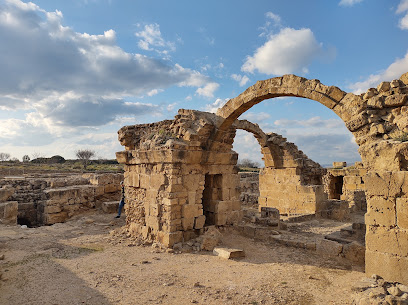
Archaeological Site of the Tombs of the Kings
Explore the Tombs of the Kings in Cyprus, an archaeological wonder showcasing ancient burial traditions amidst breathtaking landscapes.
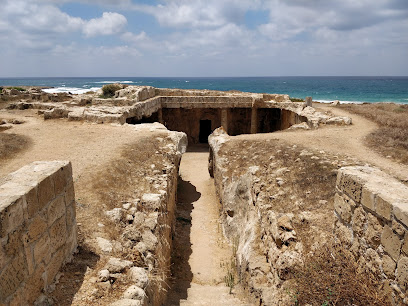
Paphos Castle
Explore the historical marvel of Paphos Castle, a captivating landmark that showcases Cyprus's rich past and stunning coastal views.
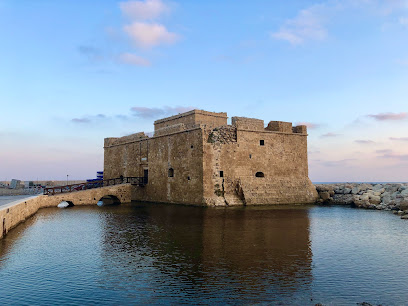
Paphos Mosaics
Explore the breathtaking Paphos Mosaics, where ancient artistry and rich history converge in a stunning archaeological site in Cyprus.
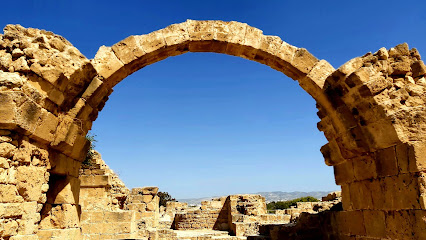
House of Dionysus
Discover the opulent ancient world at the House of Dionysus in Paphos, Cyprus, home to stunning mosaics and rich history.
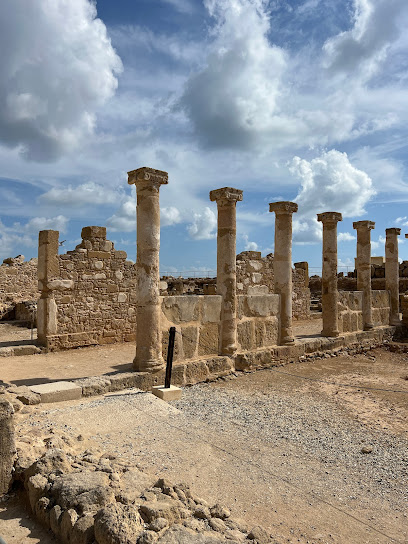
Agia Solomoni Catacomb
Discover the Agia Solomoni Catacomb in Paphos, Cyprus: a sacred site of historical significance, artistic beauty, and spiritual tranquility.
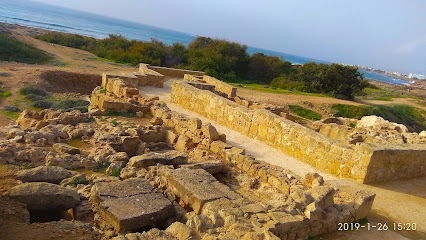
St Paul's Church and archeological site
Explore St Paul's Church and Archaeological Site, a captivating landmark in Paphos, Cyprus, steeped in rich history and stunning architecture.
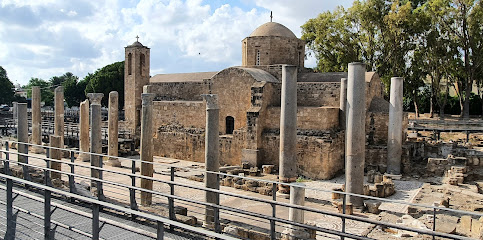
Catacombs
Discover the Paphos Catacombs: a mesmerizing glimpse into ancient history and early Christian burial practices in Cyprus.
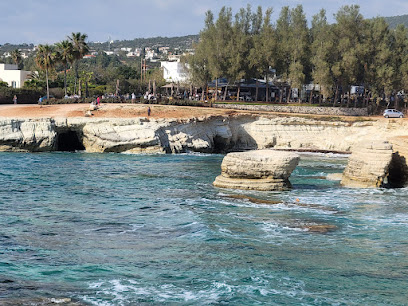
Kato Pafos Archaeological Park
Explore the captivating ruins and exquisite mosaics at Kato Pafos Archaeological Park, a UNESCO World Heritage site that reveals Cyprus's ancient history.
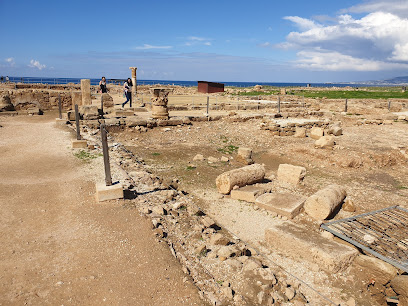
Petra tou Digheni
Discover Petra tou Digheni in Paphos, a captivating historical landmark showcasing Cyprus' rich cultural heritage and breathtaking scenery.
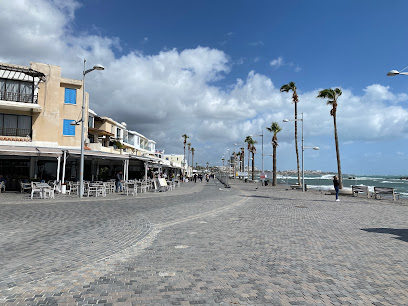
Toumpallos - Hellenistic Rock-cut Underground Complex
Explore the captivating Toumpallos Hellenistic Rock-cut Underground Complex in Paphos, Cyprus, and uncover the secrets of ancient architecture.
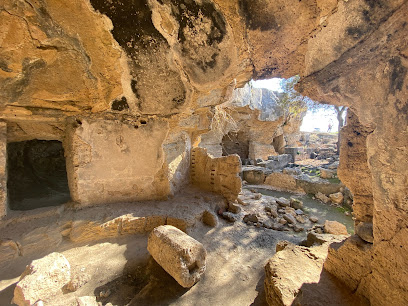
Fabrika Hill Panoramic Viewing Platform
Experience spectacular views of the Mediterranean at Fabrika Hill Panoramic Viewing Platform in Paphos, Cyprus - a must-visit tourist attraction.
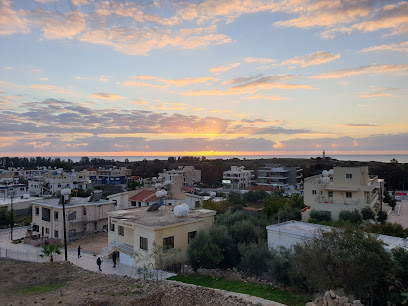
Hellenistic Circuit Wall Remains
Discover the Hellenistic Circuit Wall Remains in Paphos, a captivating historical landmark showcasing ancient fortifications with stunning views.
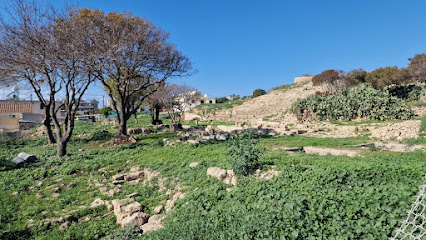
Roman Cistern
Discover the enchanting Roman Cistern in Paphos, a historical landmark that showcases ancient engineering and the rich history of Cyprus.
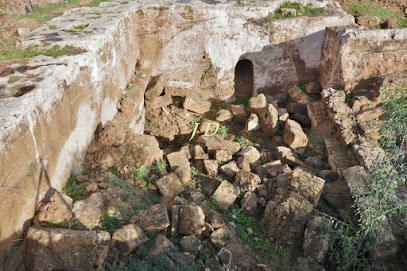
Unmissable attractions to see
Archaeological Site of Nea Paphos
Explore the ancient wonders of Nea Paphos, a historical landmark filled with captivating mosaics and rich cultural heritage in Cyprus.
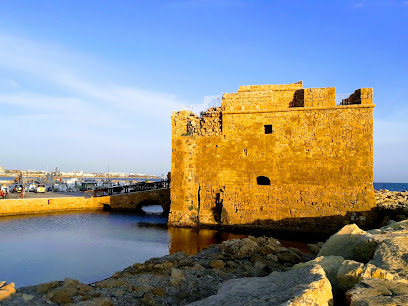
Paphos Mosaics
Explore Paphos Mosaics: A UNESCO World Heritage Site showcasing exquisite ancient art and history in Cyprus.
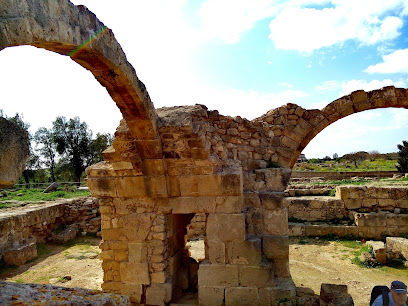
House of Dionysus
Explore the stunning mosaics and ancient ruins at the House of Dionysus in Paphos, a UNESCO World Heritage site rich in history and beauty.
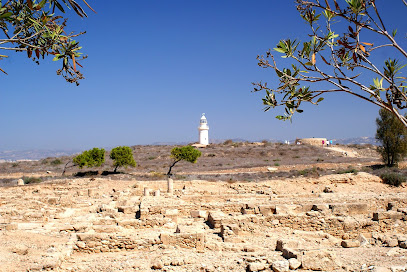
Lighthouse
Discover the stunning Lighthouse of Paphos, a historical landmark that offers breathtaking views and a glimpse into Cyprus's maritime heritage.
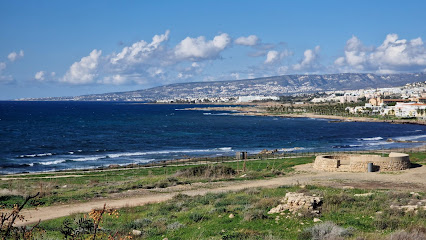
Catacombs
Uncover the ancient secrets of Paphos at the mesmerizing Catacombs, where history and heritage intertwine beneath the earth.
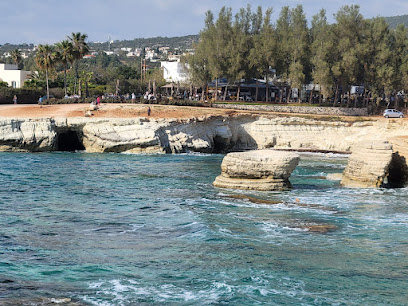
Kato Pafos Archaeological Park
Discover the ancient wonders of Kato Pafos Archaeological Park, where history and art converge in breathtaking mosaics and ruins.
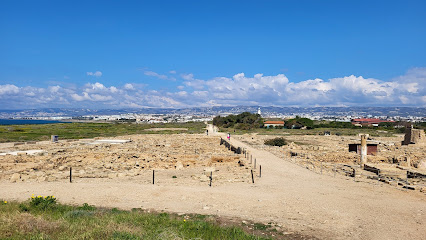
Walkway
Discover the beauty of the Mediterranean at the Paphos Walkway, a scenic promenade perfect for leisurely strolls and cultural exploration.
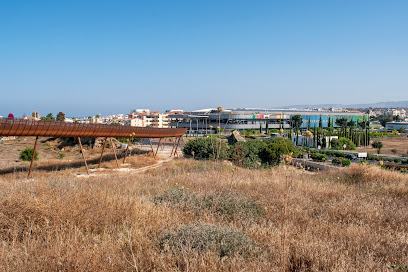
Essential places to dine
The Harbour
Discover exquisite flavors at The Harbour in Paphos – where stunning sea views meet delightful Mediterranean cuisine.
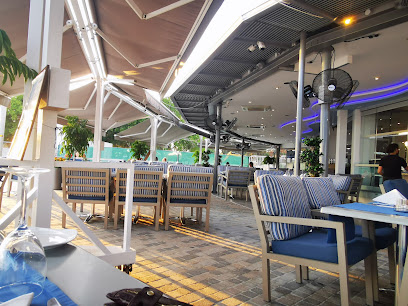
Demokritos
Discover the essence of Cypriot cuisine at Demokritos in Paphos - where tradition meets taste in a charming setting.
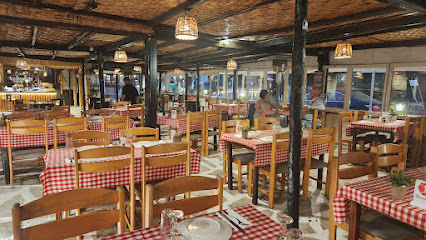
Viva Cyprus Restaurant
Discover authentic Cypriot cuisine at Viva Cyprus Restaurant in Paphos - where tradition meets flavor in every dish.
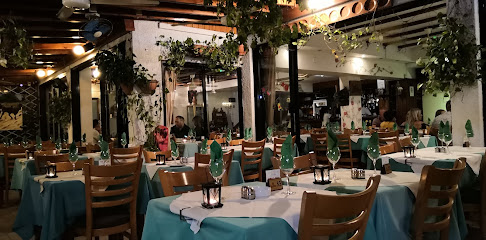
The Windmill
Discover the exquisite flavors of Cyprus at The Windmill in Paphos - where tradition meets modern culinary artistry.
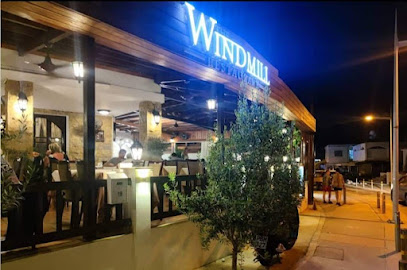
The Lodge
Discover exquisite South African cuisine at The Lodge in Paphos - where vibrant flavors meet warm hospitality.
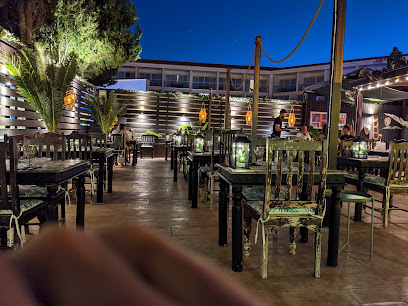
Porto Bello Restaurant
Experience authentic Italian cuisine at Porto Bello Restaurant in Paphos - where flavor meets tradition in every dish.
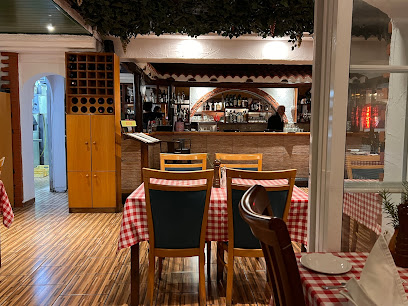
The Alkion Family Tavern Restaurant
Experience authentic Cypriot cuisine at The Alkion Family Tavern in Paphos—where every meal tells a story.
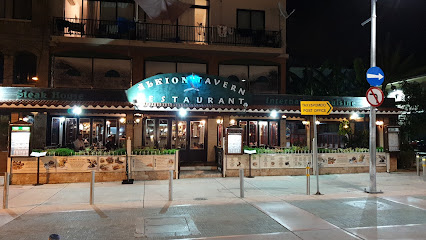
Georgia Meze House Restaurant
Discover authentic Greek and Georgian cuisine at Georgia Meze House Restaurant in Paphos - A flavorful escape into Mediterranean culinary traditions.
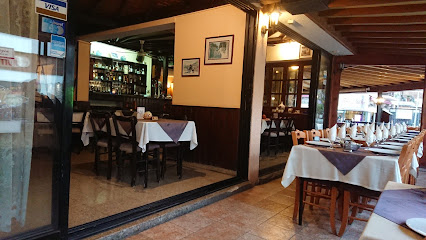
Grazie Restaurant
Discover authentic Italian flavors at Grazie Restaurant in Paphos - where every dish tells a story of culinary excellence.
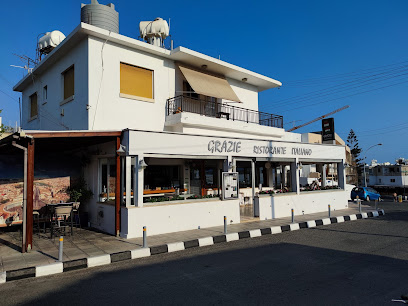
Agapinor Restaurant
Discover the rich flavors of Mediterranean cuisine at Agapinor Restaurant in Paphos – where every dish tells a story.
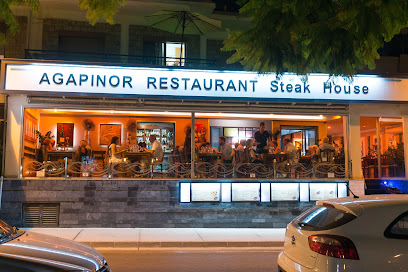
Markets, malls and hidden boutiques
April Shop
Discover unique beachwear and accessories at April Shop, Paphos' boutique paradise for trendy travelers.
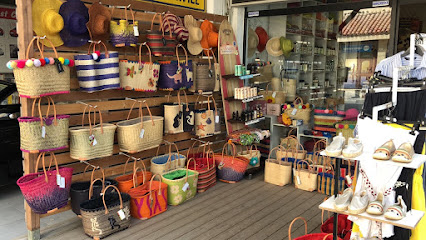
Lepus Gift Shop - Kings Avenue Mall
Explore unique gifts, stylish handbags, exquisite jewelry, and elegant watches at Lepus Gift Shop in Kings Avenue Mall, Paphos.

Sea View Souvenir & Gift Shop.
Explore the vibrant Sea View Souvenir & Gift Shop in Paphos for unique gifts, local products, and a taste of Cypriot culture.
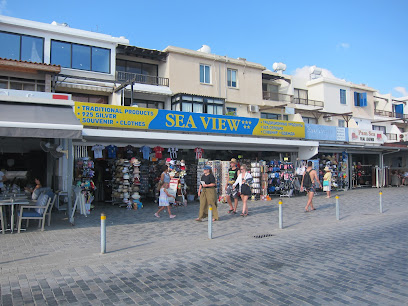
Freedom
Discover local treasures and everyday essentials at Freedom, a vibrant convenience store in the heart of Paphos.
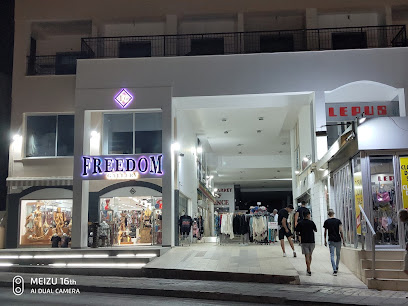
L&K Principles Accessories & Gifts
Explore L&K Principles Accessories & Gifts in Paphos for unique souvenirs and local treasures that embody the spirit of Cyprus.
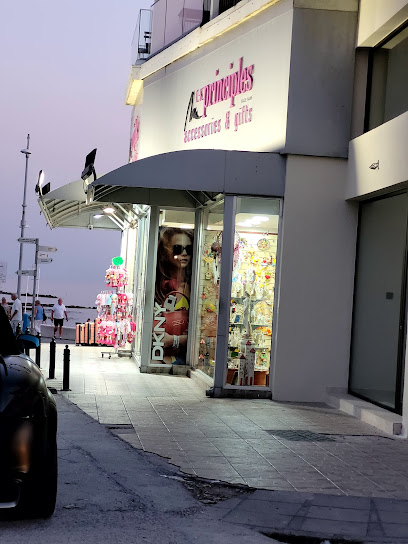
Station of Traditional Products & Gifts.
Explore Paphos' Station of Traditional Products & Gifts for unique souvenirs, stylish accessories, and a taste of Cypriot culture.

Have A Look Souvenir & Gift Shop.
Explore Have A Look Souvenir & Gift Shop in Paphos for unique gifts, stylish clothing, and local treasures that capture the essence of Cyprus.
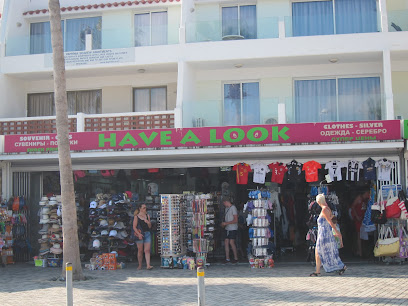
Natural Choice Cyprus
Explore the charm of Cyprus with unique, locally crafted souvenirs at Natural Choice Cyprus, where tradition meets creativity.

Antoniou & Kyriacou
Explore Antoniou & Kyriacou in Paphos for unique gifts and local crafts that capture the essence of Cyprus.
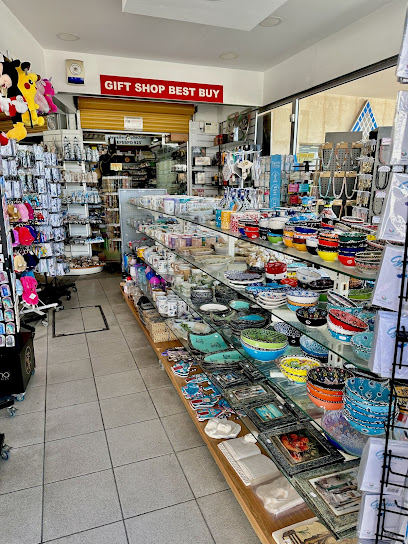
Japanese BouAntique
Explore the unique and exquisite collection of Japanese antiques at Japanese BouAntique in Paphos, Cyprus, a treasure trove of cultural heritage.
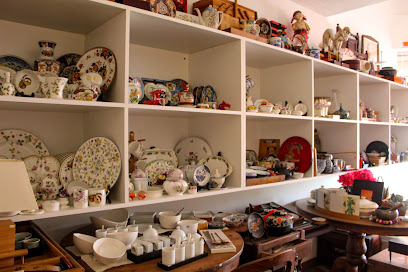
Essential bars & hidden hideouts
The Wooden Pub
Experience the vibrant nightlife and local brews at The Wooden Pub, a cozy bar in the heart of Paphos, Cyprus.
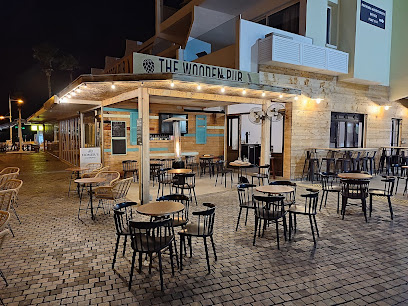
Friends Resto Bar
Experience the perfect blend of delicious cuisine and lively nightlife at Friends Resto Bar in Paphos, Cyprus.
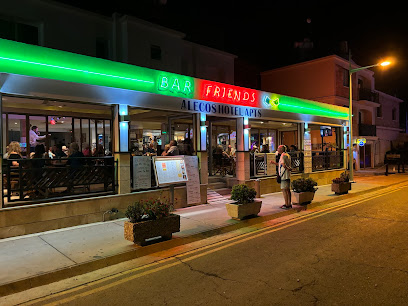
Flintstones
Discover the lively ambiance and diverse drink selection at Flintstones, Paphos' favorite bar for tourists and locals alike.
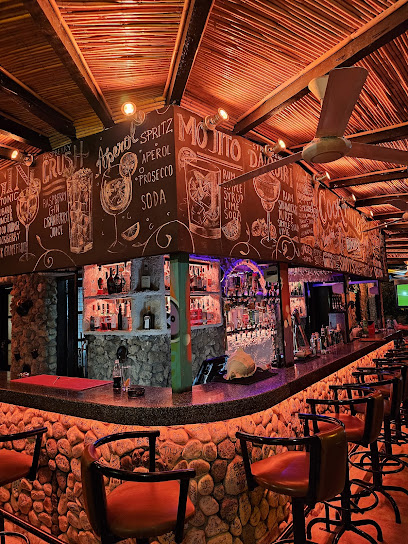
Why Not?
Discover the vibrant nightlife of Paphos at Why Not? - a lively bar offering refreshing drinks, local flavors, and an inviting atmosphere.
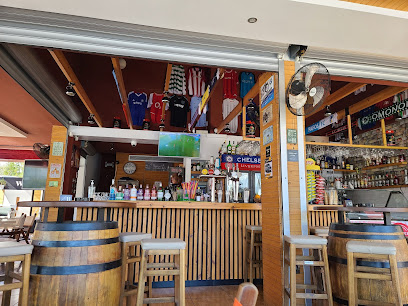
Alexanders Sports Bar
Discover Alexanders Sports Bar in Paphos: a lively destination for sports fans and food lovers, offering great atmosphere and local cuisine.
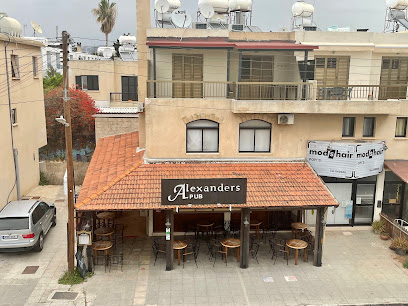
Different Bar
Experience the lively nightlife at Different Bar, a welcoming gay bar in Paphos, Cyprus, known for its vibrant atmosphere and entertaining events.
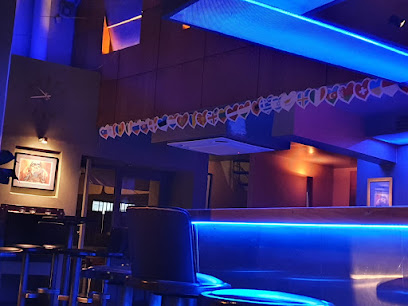
Memories Cocktail Bar
Discover the vibrant nightlife of Paphos at Memories Cocktail Bar, where expertly crafted cocktails and a lively atmosphere await.
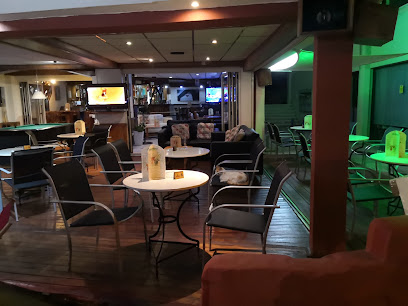
Buzz Bar
Discover Buzz Bar in Paphos, where exceptional cocktails meet vibrant nightlife in an inviting atmosphere perfect for every traveler.
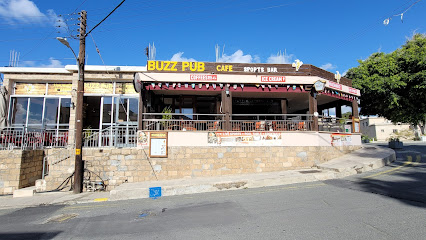
Robin Hood Pub Paphos
Discover the lively atmosphere of Robin Hood Pub in Paphos, where local culture meets vibrant nightlife and delicious drinks await.
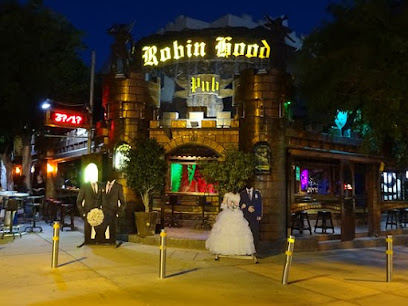
Notorious Bar
Notorious Bar in Paphos offers a vibrant nightlife experience with a wide selection of drinks and lively entertainment, perfect for tourists seeking fun.

Local Phrases
-
- HelloΓειά σας
[Yia sas] - GoodbyeΑντίο
[Antio] - YesΝαι
[Ne] - NoΌχι
[Ohi] - Please/You're welcomeΠαρακαλώ
[Parakalo] - Thank youΕυχαριστώ
[Efharisto] - Excuse me/SorryΣυγγνώμη
[Signomi] - How are you?Πώς είστε;
[Pos iste?] - Fine. And you?Καλά. Εσείς;
[Kala. Esis?] - Do you speak English?Μιλάτε Αγγλικά;
[Milate Anglika?] - I don't understandΔεν καταλαβαίνω
[Den katalaveno]
- HelloΓειά σας
-
- I'd like to see the menu, pleaseΘα ήθελα να δω το μενού, παρακαλώ
[Tha ithela na do to menou, parakalo] - I don't eat meatΔεν τρώω κρέας
[Den troo kreas] - Cheers!Υγεία!
[Ygeia!] - I would like to pay, pleaseΘα ήθελα να πληρώσω, παρακαλώ
[Tha ithela na plirosso, parakalo]
- I'd like to see the menu, pleaseΘα ήθελα να δω το μενού, παρακαλώ
-
- Help!Βοήθεια!
[Voitheia!] - Go away!Φύγε!
[Fige!] - Call the Police!Καλέστε την Αστυνομία!
[Kaleste tin Astynomia!] - Call a doctor!Καλέστε ένα γιατρό!
[Kaleste ena giatro!] - I'm lostΈχω χαθεί
[Eho hathi] - I'm illΕίμαι άρρωστος
[Eimai arrostos]
- Help!Βοήθεια!
-
- I'd like to buy...Θα ήθελα να αγοράσω...
[Tha ithela na agorasoo...] - I'm just lookingΑπλά κοιτάω
[Apla koitao] - How much is it?Πόσο κοστίζει;
[Poso kostizi?] - That's too expensiveΑυτό είναι πολύ ακριβό
[Afto einai poli akribo] - Can you lower the price?Μπορείτε να χαμηλώσετε την τιμή;
[Boreite na hamilosete tin time?]
- I'd like to buy...Θα ήθελα να αγοράσω...
-
- What time is it?Τι ώρα είναι;
[Ti ora einai?] - It's one o'clockΕίναι μία ώρα
[Einai mia ora] - Half past (10)Μισή (10)
[Misi (10)] - MorningΠρωί
[Proi] - AfternoonΑπόγευμα
[Apoyevma] - EveningΒράδυ
[Vradi] - YesterdayΧθες
[Hthes] - TodayΣήμερα
[Simera] - TomorrowΑύριο
[Aurio] - 1Ένα
[Ena] - 2Δύο
[Dyo] - 3Τρία
[Tria] - 4Τέσσερα
[Tessera] - 5Πέντε
[Pente] - 6Έξι
[Exi] - 7Επτά
[Epta] - 8Οκτώ
[Okto] - 9Εννιά
[Ennia] - 10Δέκα
[Deka]
- What time is it?Τι ώρα είναι;
-
- Where's a/the...?Πού είναι ένα/το...;
[Pou einai ena/to...?] - What's the address?Ποια είναι η διεύθυνση;
[Poia einai i diefthinsi?] - Can you show me (on the map)?Μπορείτε να μου δείξετε (στο χάρτη);
[Boreite na mou deksete (sto charti)?] - When's the next (bus)?Πότε είναι το επόμενο (λεωφορείο);
[Pote einai to epomeno (leoforeio)?] - A ticket (to ....)Ένα εισιτήριο (για τον/την ....)
[Ena eisitirio (gia ton/tin ....)]
- Where's a/the...?Πού είναι ένα/το...;
History of Kato Paphos
-
Kato Paphos, once an ancient city, served as a key center of worship for Aphrodite, the goddess of love and beauty. The site, known as the birthplace of Aphrodite, attracted pilgrims and tourists in antiquity. Archaeological evidence suggests that Kato Paphos was continuously inhabited from the Neolithic period and flourished during the Hellenistic and Roman eras, becoming a prominent urban settlement.
-
During the Roman period, Kato Paphos became a significant administrative and cultural hub. The region is renowned for its stunning mosaics, particularly in the House of Dionysus, which depict intricate scenes from mythology. These mosaics are among the finest examples of Roman art found in the eastern Mediterranean, showcasing the wealth and artistic prowess of the time.
-
With the rise of Christianity in the 4th century, Kato Paphos transformed into a religious center. Early Christian basilicas were constructed, including the Agia Kyriaki church, which incorporates elements of Roman architecture. The region's religious significance continued, with Kato Paphos becoming an important locale for early Christian worship and pilgrimage.
-
In the medieval era, Kato Paphos experienced various cultural influences, notably during the Lusignan and Venetian periods. The construction of the Paphos Castle reflects the strategic military importance of the region during this time, serving as a fortress and a symbol of power. The castle has since become a landmark, representing the architectural legacy of the era.
-
In the 20th century, Kato Paphos emerged as a popular tourist destination, celebrated for its historical and cultural heritage. The archaeological park, a UNESCO World Heritage Site, has been instrumental in preserving the ancient ruins and mosaics while promoting tourism. This blend of historical significance and modern development has made Kato Paphos a vibrant area, drawing visitors from around the world.
Kato Paphos Essentials
-
Kato Paphos is accessible from other neighborhoods in Paphos via various modes of transportation. The area is approximately 20 kilometers from Paphos International Airport, which is served by taxis and shuttle services. If you are in Paphos town or the harbor area, Kato Paphos is within walking distance. Alternatively, local buses connect Kato Paphos with other neighborhoods, such as Geroskipou and Coral Bay, providing an economical option for travelers.
-
Kato Paphos is a compact area ideal for exploration on foot, allowing visitors to enjoy its historical sites and seafront promenade. For longer distances, the local bus service operates routes throughout Paphos and beyond, making it easy to reach attractions like the Paphos Archaeological Park. Taxis are also readily available and can be hailed from the street or booked via phone. Bicycle rentals are popular, with several shops offering bikes for hire, providing a fun way to explore the coastal path.
-
Kato Paphos is generally considered a safe neighborhood for tourists. However, typical travel precautions should be taken. Avoid poorly lit areas at night and be mindful of your belongings in crowded spaces. Petty crimes, such as pickpocketing, can occur, particularly in busy tourist spots. While there are no specific high-crime areas, it’s advisable to stay vigilant and avoid walking alone late at night in secluded areas.
-
In case of an emergency, dial 112 for police, fire, or medical assistance in Cyprus. The local police station is located within Kato Paphos. For medical emergencies, there are hospitals and clinics in the area. It is advisable to have travel insurance that covers medical issues. Pharmacies are available for minor health concerns, and many staff speak English.
-
Fashion: Do dress modestly when visiting churches or archaeological sites. Avoid wearing swimsuits outside the beach areas. Religion: Do respect local customs; when entering churches, dress appropriately and maintain silence. Public Transport: Do be polite and give up your seat to those in need. Don't eat or drink on buses. Greetings: Do greet locals with a handshake and a smile. Eating & Drinking: Do try local dishes, especially in family-run tavernas. Don’t refuse food or drink offered to you, as it may be seen as impolite.
-
To experience Kato Paphos like a local, visit the fresh produce markets early in the morning for local fruits and vegetables. Engage with local vendors; they are often happy to share stories about their products. Don’t miss the Paphos Harbor area, especially during sunset, when the atmosphere is vibrant. Try to dine in local tavernas rather than tourist restaurants for a more authentic culinary experience. Lastly, if you have time, explore the lesser-known ruins and archaeological sites to avoid the crowds.
Trending Landmarks in Kato Paphos
-
Archaeological Site of Nea Paphos
-
Archaeological Site of the Tombs of the Kings
-
Paphos Castle
-
Paphos Mosaics
-
House of Dionysus
-
Agia Solomoni Catacomb
-
St Paul's Church and archeological site
-
Catacombs
-
Kato Pafos Archaeological Park
-
Petra tou Digheni
-
Toumpallos - Hellenistic Rock-cut Underground Complex
-
Fabrika Hill Panoramic Viewing Platform
-
Hellenistic Circuit Wall Remains
-
Roman Cistern
Nearby Cities to Kato Paphos
-
Things To Do in Paphos
-
Things To Do in Pissouri
-
Things To Do in Polis Chrysochous
-
Things To Do in Troodos
-
Things To Do in Limassol
-
Things To Do in Kyrenia
-
Things To Do in Nicosia
-
Things To Do in Larnaca
-
Things To Do in Famagusta
-
Things To Do in Ayia Napa
-
Things To Do in Protaras
-
Things To Do in Alanya
-
Things To Do in Antalya
-
Things To Do in Beirut
-
Things To Do in Batroun






